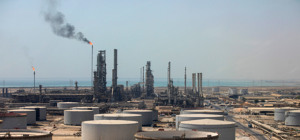Tavex uses cookies to ensure website functionality and improve your user experience. Collecting data from cookies helps us provide the best experience for you, keeps your account secure and allows us to personalise advert content. You can find out more in our cookie policy.
Please select what cookies you allow us to use
Cookies are small files of letters and digits downloaded and saved on your computer or another device (for instance, a mobile phone, a tablet) and saved in your browser while you visit a website. They can be used to track the pages you visit on the website, save the information you enter or remember your preferences such as language settings as long as you’re browsing the website.
| Cookie name | Cookie description | Cookie duration |
|---|---|---|
| tavex_cookie_consent | Stores cookie consent options selected | 60 weeks |
| tavex_customer | Tavex customer ID | 30 days |
| wp-wpml_current_language | Stores selected language | 1 day |
| AWSALB | AWS ALB sticky session cookie | 6 days |
| AWSALBCORS | AWS ALB sticky session cookie | 6 days |
| NO_CACHE | Used to disable page caching | 1 day |
| PHPSESSID | Identifier for PHP session | Session |
| latest_news | Helps to keep notifications relevant by storing the latest news shown | 29 days |
| latest_news_flash | Helps to keep notifications relevant by storing the latest news shown | 29 days |
| tavex_recently_viewed_products | List of recently viewed products | 1 day |
| tavex_compare_amount | Number of items in product comparison view | 1 day |
| Cookie name | Cookie description | Cookie duration |
|---|---|---|
| chart-widget-tab-*-*-* | Remembers last chart options (i.e currency, time period, etc) | 29 days |
| archive_layout | Stores selected product layout on category pages | 1 day |
| Cookie name | Cookie description | Cookie duration |
|---|---|---|
| cartstack.com-* | Used for tracking abandoned shopping carts | 1 year |
| _omappvp | Used by OptinMonster for determining new vs. returning visitors. Expires in 11 years | 11 years |
| _omappvs | Used by OptinMonster for determining when a new visitor becomes a returning visitor | Session |
| om* | Used by OptinMonster to track interactions with campaigns | Persistent |
| Cookie name | Cookie description | Cookie duration |
|---|---|---|
| _ga | Used to distinguish users | 2 years |
| _gid | Used to distinguish users | 24 hours |
| _ga_* | Used to persist session state | 2 years |
| _gac_* | Contains campaign related information | 90 days |
| _gat_gtag_* | Used to throttle request rate | 1 minute |
| _fbc | Facebook advertisement cookie | 2 years |
| _fbp | Facebook cookie for distinguishing unique users | 2 years |
Why is Oil Production Falling and its Price Rising?

At the end of 2023, Saudi Arabia reduced its oil production to the lowest level seen since October 2021. The country declared plans to further decrease its output by 2 million barrels per day by the end of 2023. This adjustment is anticipated to bring the daily production rate down to approximately 8.92 million barrels during November and December.
As the foremost global exporter of oil and the second-largest producer, Saudi Arabia plays a pivotal role in shaping the market dynamics of crude oil. Its production accounts for nearly 9% of the world’s daily oil consumption, which totals around 101 million barrels. This significant contribution underscores Saudi Arabia’s considerable influence over the pricing of this essential commodity.
Russia is scaling back its oil exports to Europe in response to the European Union and the United States imposing caps on the price of Russian oil. Concurrently, Russia has been conducting its oil transactions in Chinese yuan for more than a year. These developments suggest that the dollar’s fifty-year reign over global commodity trading could be nearing its conclusion.
However, it’s important to examine the motivations behind Saudi Arabia and Russia’s decisions to reduce oil supplies. Additionally, we should consider the potential impact on oil prices in the event of an economic downturn.
Why is Saudi Arabia Reducing Oil Supply?

Since initiating a reduction in oil production in March 2023, Saudi Arabia has seen a 28.6% increase in oil prices from their mid-summer low to the present. The kingdom has attributed this cutback to the goal of “stabilising the oil market“. However, it’s clear that Saudi Arabia also has a significant incentive to boost its profits through these measures.
The country is concentrating on funding domestic infrastructure projects, with the expenses for these endeavours being directly financed by the profits generated from oil trading. To afford these projects, the global price of this commodity must exceed the so-called fiscal breakeven oil price. This price encompasses not only the costs of extraction and delivery but also the expenses associated with Saudi Arabia’s ambitious mega-infrastructure initiatives.
These projects are financed by the Public Investment Fund, established in 2015.
Presently, the fund oversees assets exceeding $700 billion in value, positioning it as the sixth-largest investment fund globally
Among the major projects currently underway are NEOM, the Red Sea project, and ROSHN, among others. The collective expenditure for these initiatives amounts to hundreds of billions of dollars.
Interestingly, there is a strong inverse relationship between Saudi government spending and the price of oil. When oil prices fall, the government spends more. When oil goes up, the government spends less.
The reason is that the government prepares a budget for the next financial year based on the current price of oil. If it decreases, the state still continues with the already set costs. When the price rises again, it pays off its accumulated debts.
In 2022, oil prices were anticipated to exceed the fiscal oil price of $87 per barrel. This prediction came to fruition, with the average oil price for the year standing at $100.93 per barrel. Consequently, the Saudi government reported its first budget surplus since 2013, despite substantial spending. This achievement was notable even as the price of crude oil traded at a fraction of the fiscal breakeven level required by Saudi Arabia.
Does the Price of Oil Go Down During a Recession?

When economies decline, can we expect depressed demand for oil to lead to a lower price? Let’s see what history shows.
Between 1986 and 1999, the average price of Brent crude oil hovered around $18 per barrel. However, from the early 2000s until June 2008, it escalated from $28 to an unprecedented peak of $139 per barrel.
This surge was followed by a swift and significant downturn. By January 2009, the price of oil had plummeted to $42 per barrel. This decline was attributed to the first drop in global oil demand in modern history, decreasing by 0.7% in 2008 and 1.54% in 2009 on an annual basis. Despite this, as economies began to recover from the recession between 2010 and 2014, the average price of oil rebounded to approximately $95 per barrel, marking a fivefold increase from the levels seen between 1986 and 1999.
Over the last four years, oil prices have demonstrated a notable pattern of fluctuation. During the pandemic, prices plummeted to the lowest level seen since the start of the 21st century, reaching $20.48 per barrel—in fact, at one point, oil prices even dipped into negative territory!
Subsequently, there was a rapid recovery, with prices soaring to a high of $112 per barrel in May 2022.
This surge was primarily driven by escalating demand, especially from Asia
China and India, being the world’s second and third largest oil consumers, account for 21% of the global daily oil consumption.
Considering the price trends observed between 2008 and 2014, it is highly likely that oil prices will experience a significant drop during the next recession. However, even the Great Recession did little to dampen the long-term upward trajectory of oil prices. Despite temporary declines, the commodity has remained substantially more expensive than in previous decades.
Conclusion
Oil remains the primary source of energy worldwide. As the prices of diesel, gasoline, and kerosene climb, the cost of other commodities, especially food, is also escalating. Currently, food prices are experiencing a rapid increase, though they are no longer surging at the peak rate of this inflationary cycle. In several European countries, such as Romania, Bulgaria, and Serbia, the rate of price growth for food still reaches double digits.
It goes without saying that the rise in oil prices is also expected to push up the costs of other energy products.
This upward trend in fuel and food prices is poised to continue impacting consumers, who have already witnessed a significant erosion in their purchasing power over the last two years.

















